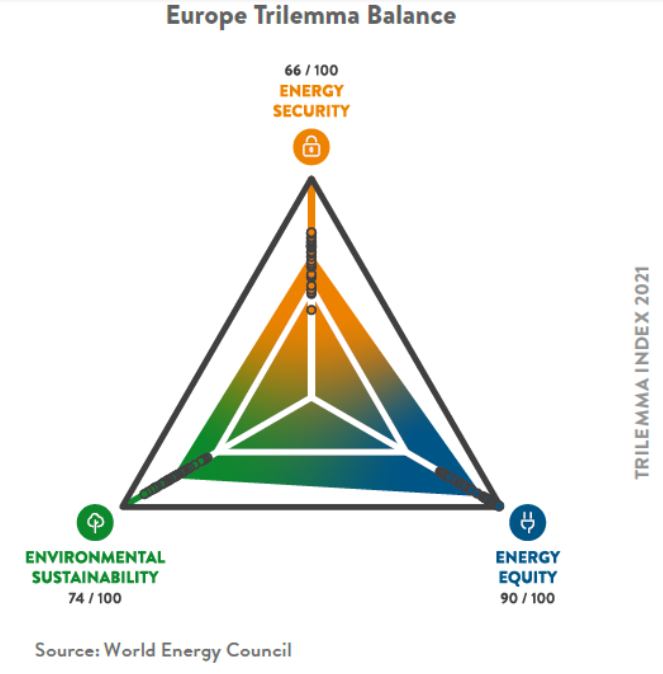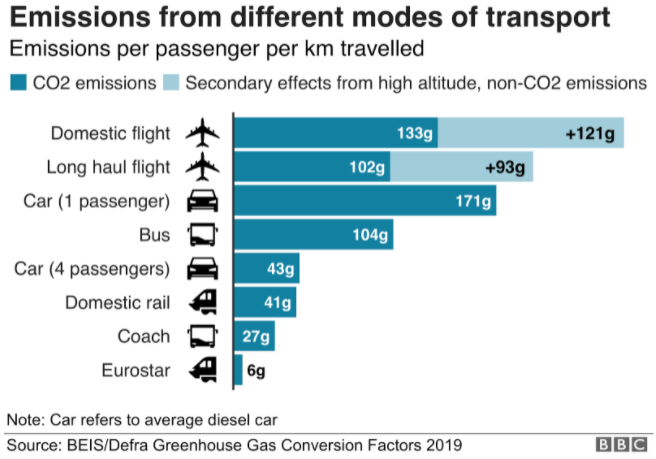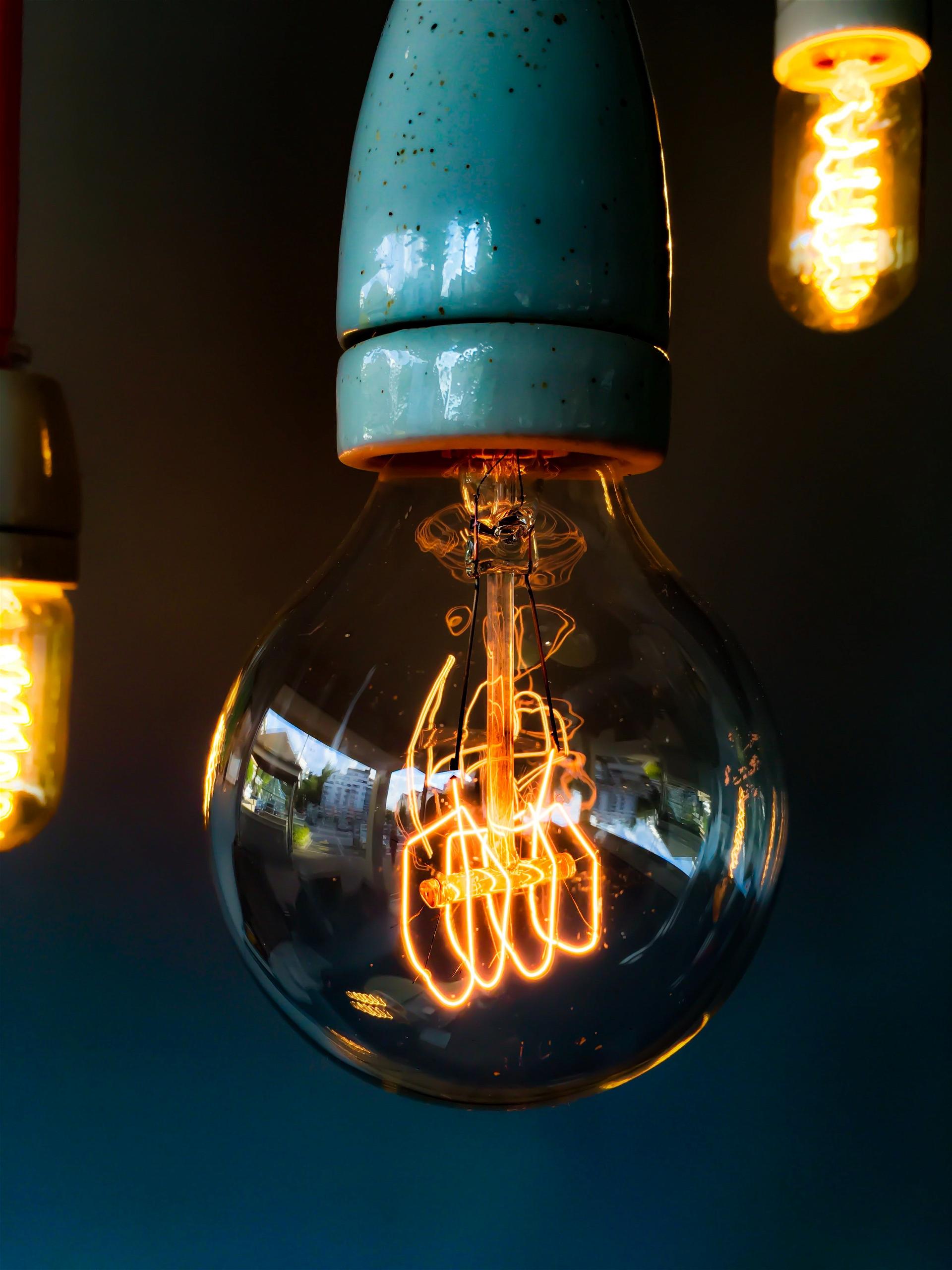· 8 min read
Climate change is real. It is also overwhelming to many – what do I do, where do I start? In the time of fake news and social media rabbit holes, it’s never been more important to understand the facts. It’s one of three centenary ambitions of the World Energy Council (Improving energy literacy, involving more people, enabling just transition) and one of the three main purposes of the EU Climate Pact (learning about climate change, connecting knowledge, creating solutions). But a collection of facts is not enough – we also need principles and useful frameworks to guide our actions as citizens and private individuals. The Energy Trilemma Index helps to do just that.
The Energy Trilemma Index is an index released each year by the World Energy Council, ranking countries on three competing aspects: energy security, energy equity and environmental sustainability. It’s a tool used by and aimed at policymakers, energy leaders and investors to manage the energy transition effectively. But its usefulness is not limited to professionals – citizens can and should put it to work, too. Here’s the guide to get you started.
Three aspects of the trilemma
To understand how the trilemma can be used to assess and discuss energy transition actions, one needs to understand its three dimensions. Once you know the basics, you can apply the Trilemma framework in a variety of ways, be it on an individual level - discussions with friends, family or colleagues - or broader, through community activism, lobbying governments, and others.

The first index dimension, energy security, is the ability to continuously meet current and future demand. It covers the effectiveness, reliability and resilience of energy infrastructure, energy source and supply chain management. Essentially it means – will you get energy when you turn on the switch, every time, regardless of circumstances? It’s important as we need energy to keep society running and generate wealth, whether it’s for individuals to conduct their everyday life at home, factories to make goods, companies to power offices or haulers to transport goods.
Take examples of renewable energy such as solar, wind or hydro. They can be subject to weather conditions – thereby reducing energy security. To secure energy supply, some countries are planning to keep using natural gas as a “transitional fuel”. However, combining renewables with energy storage would be the more sustainable way to provide energy security. Although historically more expensive, reducing costs have led it to become economically competitive in different locations. Let’s not forget that fossil fuels also have their energy security issues: in 2021 the UK experienced petrol stations running out of fuel and all of Europe experienced natural gas shortages. This brings us to the next competing element: energy equity.
Energy equity is the ability to provide abundant, affordable, and accessible energy for all domestic and commercial users. In many countries, increasing energy prices mean poorer communities are hit the hardest, no longer able to afford a fair standard of living or transport to their place of work. This increases inequality and reduces fairness, thus reducing equity. Equity is affected by base cost, tax, demand, and distribution. In the case of base cost, existing fossil fuel infrastructure may make renewables more costly in the short term. This is situational: in many cases solar is already the most financially attractive energy to consider for new installations; with costs having decreased 85% from 2010 to 2020. Increasing investment in solar will only further its advantage: with the US Department of Energy’s investment program plans to halve solar costs from 2020 to 2030.
Energy equity is still a major issue around the world with the richest 10% of the world creating 50% of the global CO2 emissions from their fossil fuel consumption, and with 13% of the world having no access to electricity at all. Off-grid fossil fuels have been used in some places to create access: with almost 80% of Canada’s rural remote communities electricity coming from diesel generators.
Environmental sustainability is defined as the ability to mitigate and avoid negative environmental impacts. Typically there are two ways to become more environmentally sustainable: reducing consumption and switching energy sources. In the case of energy, environmental damage caused by fossil fuels is directly linked to the amount of fossil fuels consumed (burning fuels creates energy). If you use less energy, you burn less fossil fuels and thus release less emissions and have less environmental damage.
Each energy source has its own set of environmental effects. Burning fossil fuels such as oil, coal or natural gas releases greenhouse gases. This creates climate change and worsens air pollution: with oil releasing less emissions than coal and natural gas releasing less emissions than either. Waste incineration may seem like an environmentally friendly alternative to landfill but it actually releases more carbon dioxide and causes more pollution than fossil fuels. Burning biomass such as wood also releases these gases (in addition to potential contribution to deforestation) but is classified as renewable because trees can be regrown in relatively short time and it doesn’t release more carbon dioxide than it absorbed during its growth. Zero emissions in theory, but real emissions in practice. It would be more environmentally sustainable to not release any gases at all. This is the case for solar, wind, geothermal and hydropower as they don’t combust fuels or release any gases that contribute to climate change and air pollution. These sources are also renewable as the energy source can replenish itself in a short time. In other words, with good management you won’t run out of sunlight or wind or the earth’s heat or the water’s flow.
How can you apply the trilemma for citizens' action effectively?
Now that you know what the three Trilemma aspects are, you can assess any energy transition related questions or ideas by ranking it in the three dimensions. The better the outcome in each aspect, the better the overall score, or ranking. Let’s take an example of how you can use the Trilemma in practice.
You want to take climate action but are not sure how. So you go to the EU Climate Pact Climate tips for inspiration and decide to focus on choosing the best transport mode for your family. You assess the options suggested by the Climate Pact using the logic of the Trilemma Index.
- Energy equity is about you having access to affordable energy. Your commute is too long for you to walk or cycle. You have good access to affordable car-sharing, car-pooling (with 3 others) and driving alone in your own car. Car-sharing and driving your own car cost a similar amount. Car-pooling is significantly cheaper than both. You can also take the bus which is comparable in price to driving your own car.
- Energy security is about you reliably having the energy when you need it. On car sharing platforms, the cars are sometimes sold-out - you can’t always rely on them to make your commute. Buses always run as planned so it has just as high security as driving alone. Car-pooling (with 3 others) is slightly less secure as you have to account for other people. However, this is manageable as the people you are car-pooling with are either in your household or living closeby and always make the same commute.
- Environmental sustainability is about the amount of negative impact your energy use makes on the environment. Car-pooling has lower emissions than taking the bus and much lower emissions than driving alone or car-sharing* (which is also driving alone, just in someone else’s car).

This graph refers to British measures and these could change from a country to another.
Using the logic of the Trilemma you make the commitment to switch to car-pooling instead of driving alone. It’s the best option as it’s actually the most environmentally sustainable and the most energy equitable (in this case the cheapest), which outweighs the fact it’s less energy secure (reliable) when compared to driving alone or taking the bus.
Want to go a step further?
The EU Climate Pact has a network of Climate Pact Ambassadors that you can connect with to join an existing discussion or share knowledge. If you are looking to create a discussion it has an initiative called Peer Parliaments running until the end of January 2022 which provides the framework and information to discuss with the people around you as well as giving you the opportunity to submit the ideas generated in your circle directly to the EU Commission. The Pact has information on climate actions of the EU and contact details of people to get in touch with to comment on these actions or suggest other actions. Local governments may also give opportunities to engage as they play their role in fulfilling the promises of the European Green Deal and EU Climate Pact. For instance, in the Netherlands, they are creating Regional Energy Strategies – an energy transition roadmap that involves local public participation.
In the end, the real change comes not only from understanding and talking but from action. The ideas generated can be hypothetically tested against the Trilemma to understand their effectiveness. Not all actions are one aspect of the trilemma against the other aspect, though. Some are win-win-win. For instance, an individual action to reduce consumption by turning off appliances when you are not using them or using public transport would increase energy equity (by reducing demand and thus energy price), increase environmental sustainability (by reducing fossil fuel consumption and thus carbon emissions) and increase energy security (by reducing the demand and thus increasing the ability to continuously meet that demand).
Once you have come up with your action, there’s still a gap before it’s done. Actions are more likely to succeed if you tell people, as it will increase your accountability. The EU Climate Pact has the facility to receive and publish your pledges to do just this and help achieve more climate action.
As both a World Energy Council Future Energy Leader (personally co-author of Energy Trilemma) and an EU Climate Pact Ambassador, I call on you to join me in creating a just energy transition to fight climate change and ensure a liveable, equitable future for us all.
Future Thought Leaders is a democratic space presenting the thoughts and opinions of rising Energy & Sustainability writers, their opinions do not necessarily represent those of illuminem.






